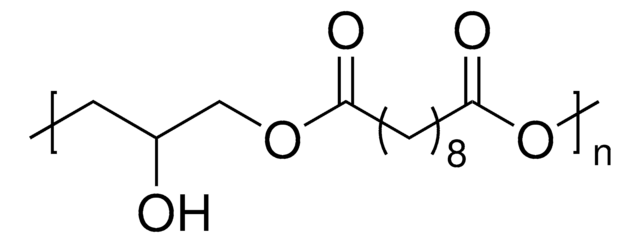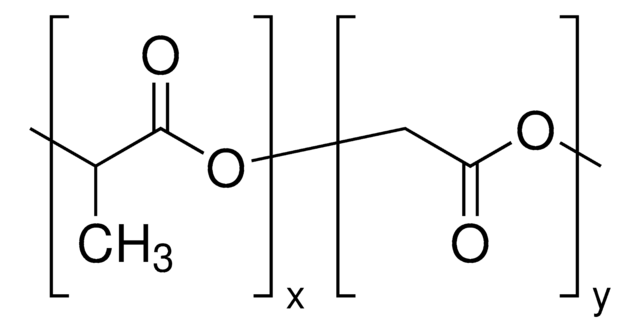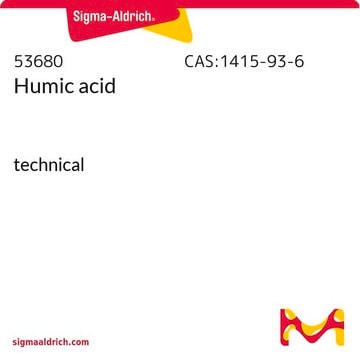900210
Regenerez® Poly(glycerol sebacate) Resin
Synonym(s):
PGS, Poly(glycerol sebacic acid)
Sign Into View Organizational & Contract Pricing
All Photos(1)
About This Item
Linear Formula:
(C13H22O5)n
UNSPSC Code:
12352200
Recommended Products
Application
Regenerez® Poly(glycerol sebacate) is a bioresorbable elastomer. The physical properties can be tuned from an elastomer to a thermoset(U.S. Patent No. 9.359,472) by curing PGS to the desired level of cross-linking. The inherent elastomeric properties of PGS can be used in a variety of applications in regenerative medicine and tissue engineering.
Features and Benefits
- Bioresorbable.
- Comprised of naturally occurring metabolites (glycerol and sebacic acid).
- Tunable mechanical properties.
- Versatile platform for further modification.
- Closely simulates modulus of human tissue.
- Enables healing without harmful immune response.
Legal Information
U.S. Patent No. 9,359,472.
Regenerez is a registered trademark of The Secant Group, LLC
Storage Class Code
11 - Combustible Solids
WGK
WGK 3
Flash Point(F)
No data available
Flash Point(C)
No data available
Certificates of Analysis (COA)
Search for Certificates of Analysis (COA) by entering the products Lot/Batch Number. Lot and Batch Numbers can be found on a product’s label following the words ‘Lot’ or ‘Batch’.
Already Own This Product?
Find documentation for the products that you have recently purchased in the Document Library.
Customers Also Viewed
Coral Salvo-Comino et al.
Sensors (Basel, Switzerland), 21(3) (2021-02-13)
The integration of nanomaterials as electron mediators in electrochemical biosensors is taking on an essential role. Due to their high surface-to-volume ratio and high conductivity, metallic nanowires are an interesting option. In this paper, silver nanowires (AgNWs) were exploited to
Cathryn A Sundback et al.
Biomaterials, 26(27), 5454-5464 (2005-04-30)
No satisfactory method currently exists for bridging neural defects. Autografts lead to inadequate functional recovery, and most available artificial neural conduits possess unfavorable swelling and pro-inflammatory characteristics. This study examined the biocompatibility of a novel biodegradable elastomer, poly(glycerol sebacate) (PGS)
Wei Wu et al.
Nature medicine, 18(7), 1148-1153 (2012-06-26)
Host remodeling is important for the success of medical implants, including vascular substitutes. Synthetic and tissue-engineered grafts have yet to show clinical effectiveness in arteries smaller than 5 mm in diameter. We designed cell-free biodegradable elastomeric grafts that degrade rapidly
Samer H Zaky et al.
Biomedical materials (Bristol, England), 9(2), 025003-025003 (2014-02-04)
For bone engineering, the optimal scaffolding material and composition has yet to be elucidated. In this study, we investigated poly (glycerol sebacate) (PGS), an elastomer known primarily for its soft tissue regeneration ability, as a suitable substrate to support osteo-precursor
Howard I Pryor et al.
Surgery, 146(3), 490-497 (2009-09-01)
The objectives of this study were to evaluate the efficacy of poly(glycerol) sebacate (PGS) films for the prevention of visceroparietal peritoneal (VP) adhesions and demonstrate the ease of laparoscopic PGS film placement. Peritoneal adhesions occur in nearly 95% of all
Our team of scientists has experience in all areas of research including Life Science, Material Science, Chemical Synthesis, Chromatography, Analytical and many others.
Contact Technical Service










